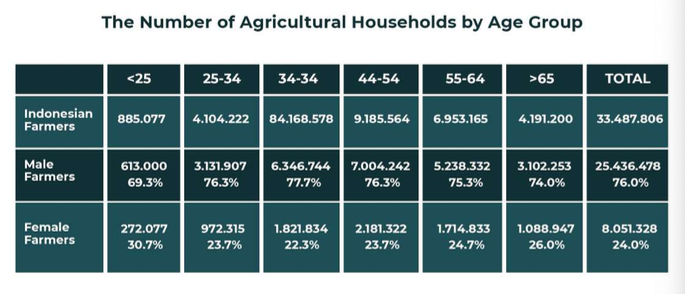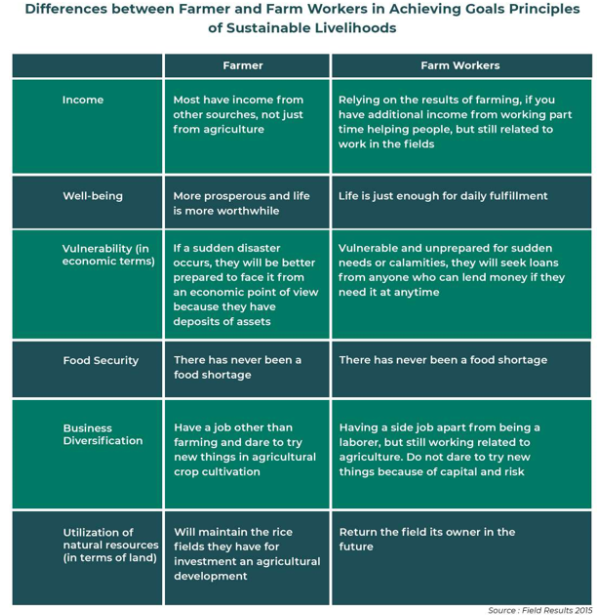How Agritech Startup Eratani Embraces the Complete Agricultural Ecosystem
DailySocial interviewed Eratani Co-founder and CEO Andrew Soeherman
Wasroni, a farmer from Indramayu, admitted that he was helped by the capital in the form of production facilities provided by Eratani. "If it is too late to [give] fertilizer, the yield will not be good," he said.
Another farmer, from Yogyakarta, Edi Purwanto, was also able to reduce expenses thanks to the farming tools and machines provided by Eratani. "We hope this can raise the price of grain," said Edi.
Just now are two of the many farmers who have joined the ecosystem Eratani, a new player in the Indonesian agritech industry. Established in 2021, Eratani was born from the concerns of the founders, manned by Andrew Soeherman, Kevin Juan, and Angles Gani, about the future of the Indonesian agricultural sector.
McKinsey previously revealed that as much as 50% -70% of the harvest in Indonesia never reaches the market. In its research, McKinsey estimates that the productivity of farmers in Indonesia must increase by 60% if they want to meet the food needs of 280 million people. This can also be realized if farmers are able to increase harvest yields, reduce post-harvest losses, and distribute them to big cities.
To be able to contribute to solving farmers' problems, Eratani entered by implementing a different strategic approach compared to existing agritech platforms.
The key element is building the ecosystem from upstream (upstream) to downstream (downstream) so that they can encourage the number of farmers who join, help distribute financing, as well as how to increase land productivity and how they can encourage farmer welfare.
Pain points
"As we apply at Eratani, I believe business is the same as water, flowing from top to bottom." said Eratani Co-founder and CEO Andrew Soeherman during a virtual conversation with DailySocial.
Andrew gained various experiences during his career at Gojek and OYO brought it to a learning moment to establish Eratani. When the Covid-19 pandemic occurred, he witnessed many shifts in business models to adapt to the era new normal.
He wants Eratani to be able to serve the agricultural ecosystem from upstream to downstream, a model that is considered not yet capable of being grasped by players Existing in the country.
There were several field issues that Andrew caught. The first is that 98% of agricultural processes from upstream to downstream have not been digitalized. Then, as many as 93% of farmers still carry out their own business activities and are not organized. Apart from that, farmers also do not have the capital to cultivate the land until harvest. Most of the production facilities are purchased with the harvest.
What was quite worrying was that he saw that most farmers in Indonesia were over 40 years old. This will be a difficult situation to regenerate new farmers because today's children are less interested in farming.

Referring to the report DSInnovate and Crowde in 2021, the things above have indeed become outdated challenges that often hinder Indonesia's agricultural sector. From capital, access to distribute products to the market, and the right to get a fair selling price. This situation was exacerbated when the pandemic occurred. According to reports, the pandemic has had an impact on labor productivity, all aspects of productivity and trade activities in the agricultural sector.
Most farmers are classified in the poor category. Never mind farming capital and operational costs. They have to think about the costs to meet their daily needs before the harvest is sold. It is difficult for farmers to find work outside the harvest season, making it difficult to meet living expenses from season to season without loans.
Different approach
Eratani uses a collective approach. Starting with capital, Andrew understands that farmers have different needs. Every farmer who wants to join Eratani must follow existing policies. Among them Eratani does not acquire farmers one by one, but enters through farmer groups. In this process, Eratani will discuss the budget and collect data on prospective farmers carried out by the Farmers team.
Next, the data is submitted to the Operations team to be validated based on a number of indicators, for example length of time as a farmer, validation of land ownership, and issues in the field, including crop yields.
"When it has been validated, not all farmers areApprove. From here, we will submit the data to P2P partners for further validation process. "In other words, the farmer acquisition process is carried out manually because farmers cannot just [understand how to use] technology or applications," he said.
Eratani also operates an Engagement team whose function is to monitor and ensure retention among farmers. This team will conduct face-to-face meetings with farmers to monitor the harvest situation or land issues.
Upstream to downstream
Eratani's mission is to simplify the farming process from upstream (including funding and supply chain management) to downstream (including distribution and distribution of harvest results). This mission is reflected in the products/services developed by Eratani, namely Era Farmers, Era Market, and Era Rice.
"We tried to validate the product in the first two or three months. We are there proof of concept until finally we got investment from angel investors in July 2021," said Andrew.
According to him, the upstream ecosystem is a key element that is difficult to build because of its operational characteristics. Plus, most farmers in Indonesia are far from urban areas. In the field, there are 180 thousand rice mailing units (RMU) available, but 60%-70% of them have stopped operating because there is no harvest. Same as models Gojek, according to him, it's useless to have millions of merchants if there aren't any driver.
Furthermore, in the Era Rice model, his party adopted the model franchise where his party facilitates grinding grain into rice and selling it back in form private-label to the supermarket. This mill depends on availability at the location, if there is none, the grain will still be sold.
Currently, Eratani is only focusing on rice, which is the largest commodity in Indonesia. Its market value reaches $31 billion annually. According to Ministry of Agriculture data, rice production as the main commodity in the agricultural sector increased to 55,27 tonnes of milled dry grain (GKG) or an increase of 1,13% in 2021 compared to the previous year.
Currently there are around 34 million farmers in Indonesia with a total land area of 10,5 million hectares. The assumption is that 50%-60% are rice farmers, when the cost of managing land per hectare reaches IDR 14 million.
"The average farmer needs IDR 30-35 million per hectare during the harvest season. After we calculate, we need source of funds sufficient to achieve [metric] Northstar we. The financing model is not in cash, but is converted into farmer production facilities managed by Eratani. For example, rent a tractor and buy fertilizer. "The converted capital does not immediately decrease all at once, usually 30% for the first processing," he explained.
Currently, Eratani is supported by five P2P platforms in distributing capital to farmers. His party is currently exploring financing partnership opportunities from the banking sector.
Then how are they facing potential payment or harvest defaults? Eratani prepared a number mitigation steps for farmers, namely insurance and buyers of crops (off taker) who will be appointed and agreed upon in the contract. Here, the Engagements team moves to find out the issues that occur in the field and how to overcome them.
So far, Eratani has more than 1.000 farmers and 1.000 hectares of built area, disbursed funds of more than IDR 10 billion, pushed agricultural productivity above 20%, and farmer income increased by 15%. This year, Eratani is targeting as many as 25.000 farmers to enter its ecosystem.
"We want farmers' lives to be better, food security to be better, and a new generation of farmers to be born," he added.
Technology
What's interesting, this process is still done manually. Andrew has a strong hypothesis why they didn't involve technology in the initial process. According to BPS data in 2018, only 4,5 million people were connected to the internet out of a total of 27 million business actors in agriculture.
"Don't be because tech company, everything must be technological. Are farmers ready to transform with you? You need time to make sure they understand. It's not the right time for them to start everything digitized," he said.
The question is, how long will this process be carried out manually?
According to Andrew, shifting This transition to digital will be done in stages. In the first planting season, the farmer acquisition process will be carried out manually, assuming that one planting season is around four months. In the second planting season, Eratani begins shifting around 30%-40% of the process goes digital. In the third planting season, the entire process has been digitized, even sales to off taker can be done via the application.
Currently, Eratani is focusing on developing farmers and building technology to accommodate their many operational needs.
"There are no startups that have entered yet plantation management. "This will be a competitive landscape, that's why we don't want to rush, even though we know that startup culture is fast-paced," concluded Andrew.
Sign up for our
newsletter
 Premium
Premium


